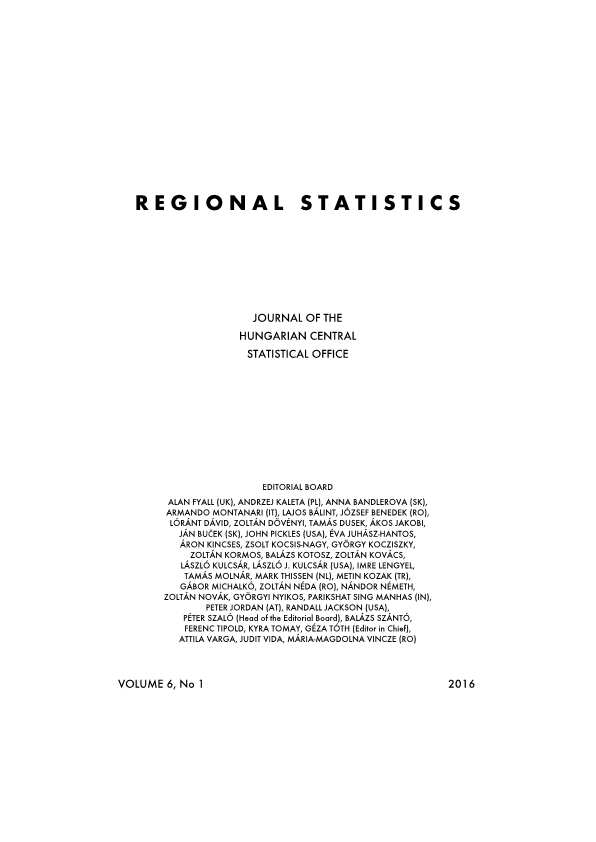Group-specific analysis of commuting
in the most disadvantaged areas of Hungary
Group-specific analysis of commuting
in the most disadvantaged areas of Hungary
Author(s): Levente Alpek, Róbert Tésits, Bokor LászlóSubject(s): Social Sciences, Economy, Geography, Regional studies
Published by: Központi Statisztikai Hivatal
Keywords: commuting; unemployment; disadvantaged groups; disadvantaged areas; regional mobility; Adjusted Mobility Index
Summary/Abstract: The study aims to examine the commuting opportunities of the most disadvantaged job seeker groups living in Hungary's most disadvantaged regions, as well as Hungary’s spatial and group-specific boundary conditions. The study also aims to develop and present an indexation process (fMFÁ model), allowing the measurement of the mobility degree of different territorial units (in this case, the municipalities) and effects of certain factors determining commuting (transport subsidies, individual choices and options). The index measures the degree of mobility by considering individual and several types of public transport, expenses and expected time of commuting. The present document defines mobility for territorial units, separating its objective and subjective types. The group-specific analysis of boundary conditions is implemented through a questionnaire survey and logical models, the aim of which is twofold. On one hand, the model specifies the maximum commuting distance, which would be accepted rationally for the most disadvantaged job seekers. On the other hand, it presents a decision-making dilemma, namely the choice between commuting to work and local employment. Thus, the study provides insights into the specific features of labour market mobility of the target group. The Average Mobility Level Model and the Adjusted Mobility Index also evaluate the regional structure of the group-specific features of commuting. Through all these, the present study may promote a more efficient spatial allocation of employment policy measures. Strengthening of local employment in areas where group-specific mobility degrees are lower and support to improve commuting opportunities and employment centres where the mobility degrees are appropriate can contribute to the decrease of unemployment.
Journal: Regional Statistics
- Issue Year: 6/2016
- Issue No: 01
- Page Range: 54-81
- Page Count: 28
- Language: English

